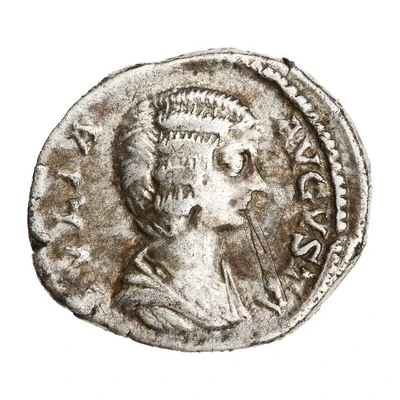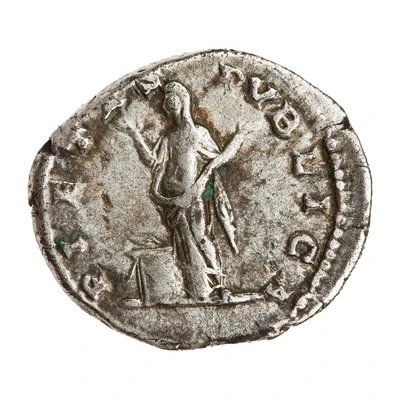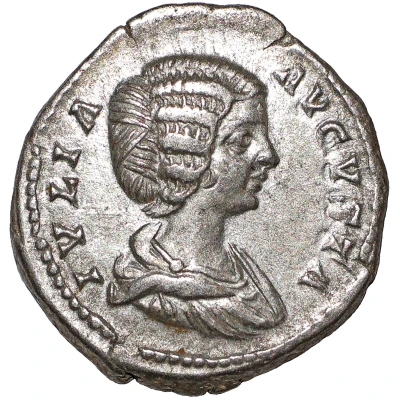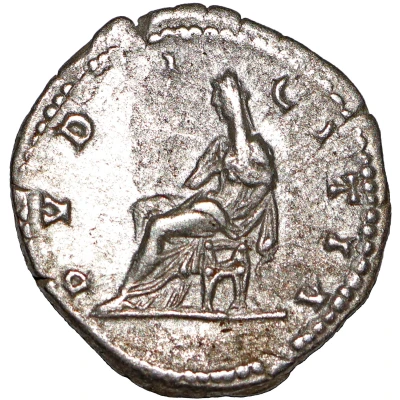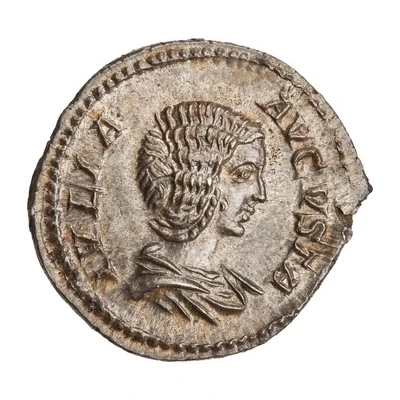
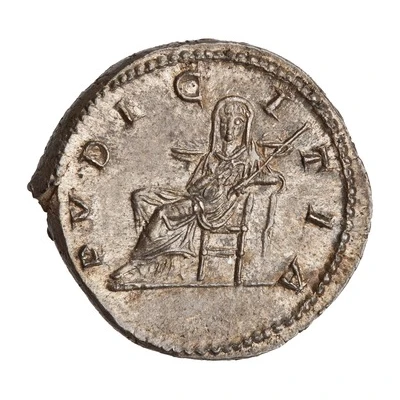

© American Numismatic Society (ANS)
Denarius - Julia Domna PVDICITIA; Pudicitia
| Silver | 3.2 g | 19 mm |
| Issuer | Rome › Roman Empire (27 BC - 395 AD) |
|---|---|
| Empress | Julia Domna (193-211) |
| Type | Standard circulation coin |
| Years | 196-211 |
| Value | 1 Denarius |
| Currency | Denarius, Reform of Augustus (27 BC – AD 215) |
| Composition | Silver |
| Weight | 3.2 g |
| Diameter | 19 mm |
| Shape | Round (irregular) |
| Technique | Hammered |
| Orientation | Variable alignment ↺ |
| Demonetized | Yes |
| Updated | 2024-10-05 |
| Numista | N#269944 |
|---|---|
| Rarity index | 95% |
Reverse
Pudicitia, veiled, draped, seated left, head front, resting right hand on breast and holding sceptre in left hand.
Script: Latin
Lettering: PVDICITIA
Translation:
Pudicitia.
Purity.
Comment
Mass varies: 2.64–3.67 g;Diameter varies: 18–20.61 mm;
Example of this type:
American Numismatic Society (ANS)
Source:
Online Coins of the Roman Empire (OCRE)
Interesting fact
The Denarius - Julia Domna (PVDICITIA; Pudicitia) coin was minted during the reign of Emperor Septimius Severus (193-211 AD), who was known for his extensive reforms and military campaigns. The coin's design features Julia Domna, the emperor's wife, on the obverse (front side), and the goddess Pudicitia (also known as Pudicitia) on the reverse (back side). Pudicitia was the Roman goddess of modesty, chastity, and purity, and her presence on the coin may have been intended to promote the values of Roman womanhood and virtue. It's worth noting that the coin's design and symbolism may have also been influenced by the cultural and political context of the time. For example, Julia Domna was known for her intelligence, political influence, and support of her husband's reign, so her inclusion on the coin may have been a way to highlight her importance and status. Additionally, the coin's silver content and weight (3.2 g) may have been significant in terms of its value and use in trade and commerce during the Roman Empire.
